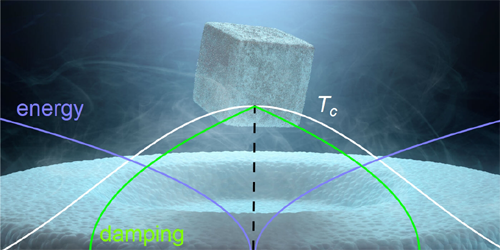Superconductivity Dome Rises from Damped Phonons
Ever since ferroelectric materials were first discovered, scientists have sought to understand how their properties relate to superconductivity. A recently discovered curiosity, for instance, is that these materials exhibit a puzzling “dome” in their critical superconducting temperature near their ferroelectric transitions. Now, Chandan Setty at Rice University, Texas, and colleagues provide a surprisingly simple explanation for this puzzle that uses lattice dynamics and phonons [1].
The superconducting dome is puzzling because of what the ferroelectric transition does to a material’s phonons. According to Bardeen-Cooper-Schrieffer (BCS) theory, phonons mediate the binding of electrons into superconductivity-producing Cooper pairs. But as a material nears the ferroelectric transition—as a result of doping or the application of strain, for example—these phonons are damped and have their lifetimes reduced. In a conventional superconductor, such phonon damping lowers the critical superconducting temperature; in a ferroelectric material, the critical temperature instead rises to a peak at the ferroelectric “instability point,” where the damping is greatest.
Setty and colleagues explain the dome by expanding BCS theory so that it describes the phonon-damping process more accurately. In particular, they show that, at the instability point, this damping is anharmonic. As a result of this anharmonicity, anti-Stokes phonon-electron scattering is suppressed more than Stokes phonon-electron scattering. Since anti-Stokes scattering inhibits Cooper-pair formation, while Stokes scattering promotes it, the effect is an increase in the critical temperature around the instability point.
Anharmonic damping occurs in all ferroelectric materials—as well as other systems with so-called soft-mode structural instabilities—explaining why experimenters have observed superconducting domes across a wide range of conditions. Setty and colleagues hope that their new understanding will provide scientists with another tool to engineer superconductivity in such materials.
–Rahul Rao
Rahul Rao is a freelance science writer based in New York.
References
- C. Setty et al., “Superconducting dome in ferroelectric-type materials from soft mode instability,” Phys. Rev. B 105, L020506 (2022).




